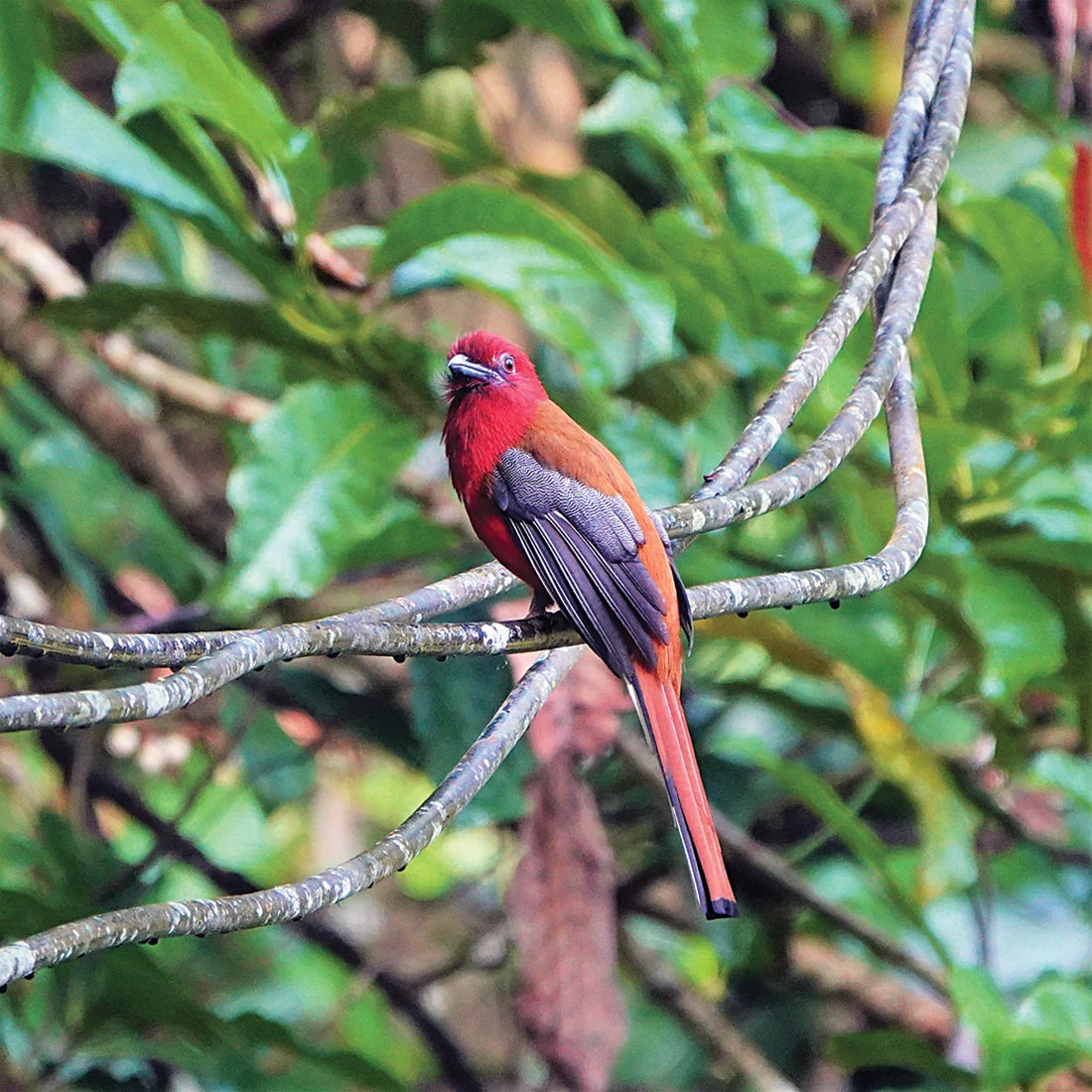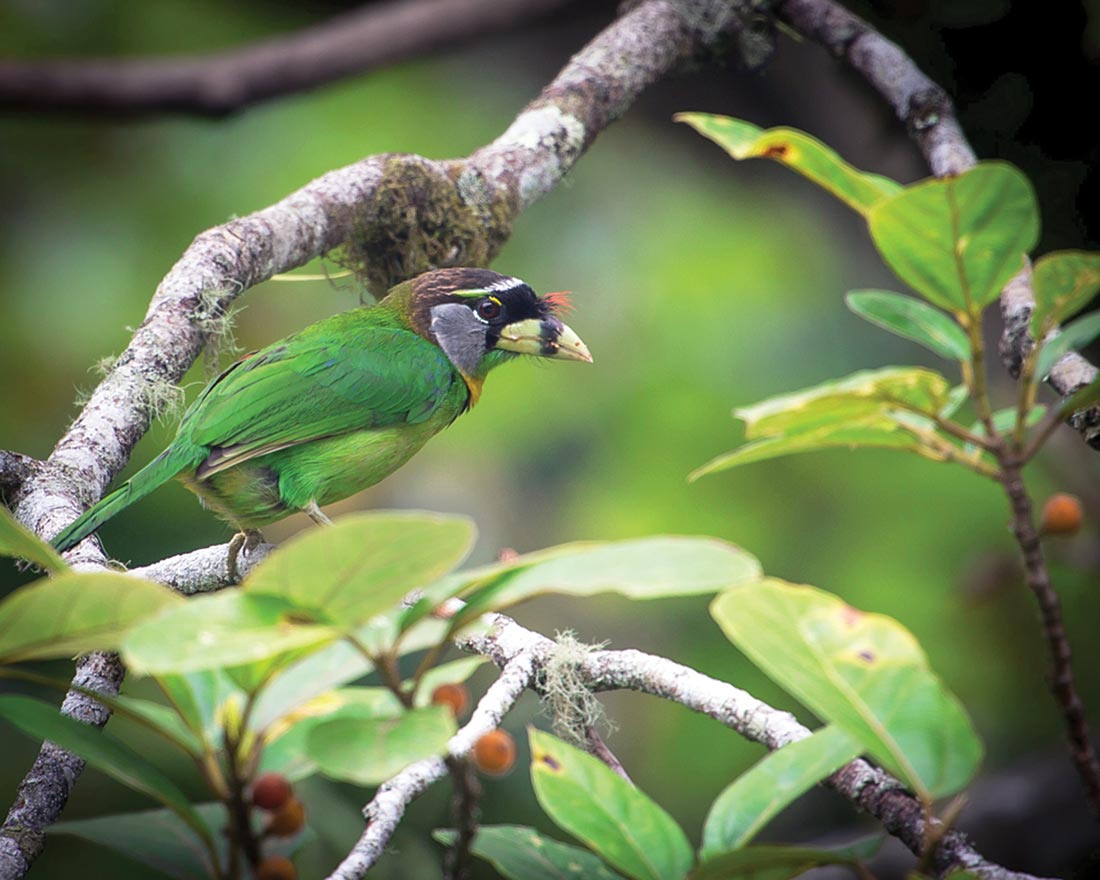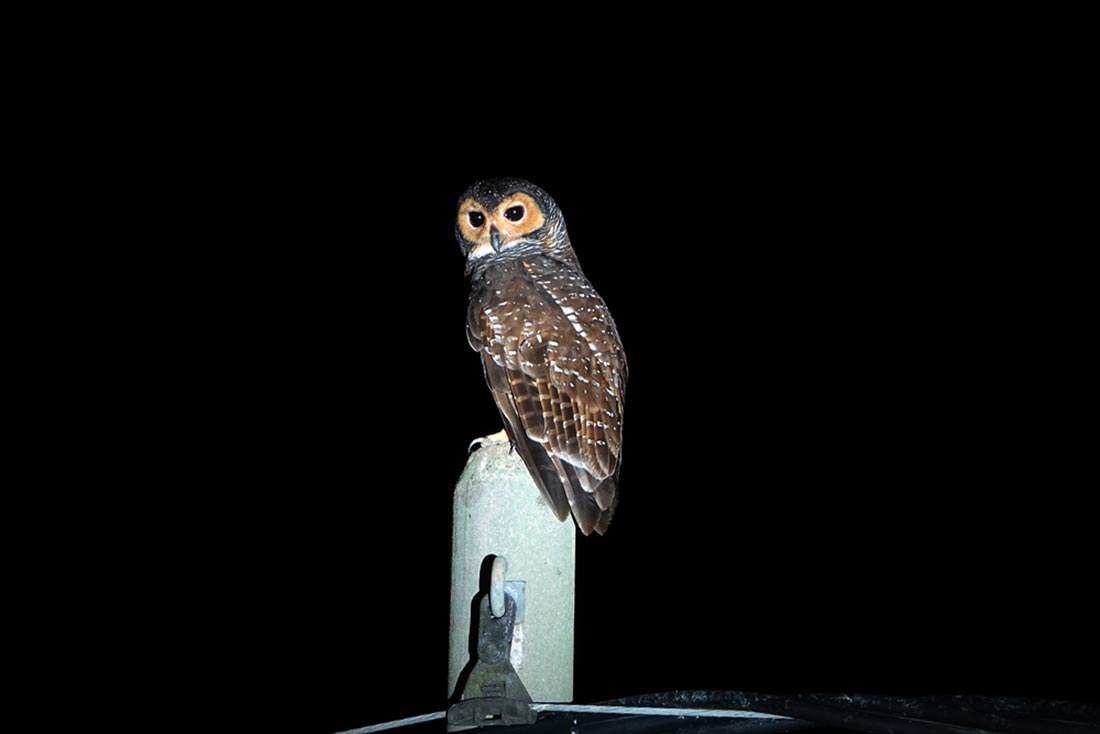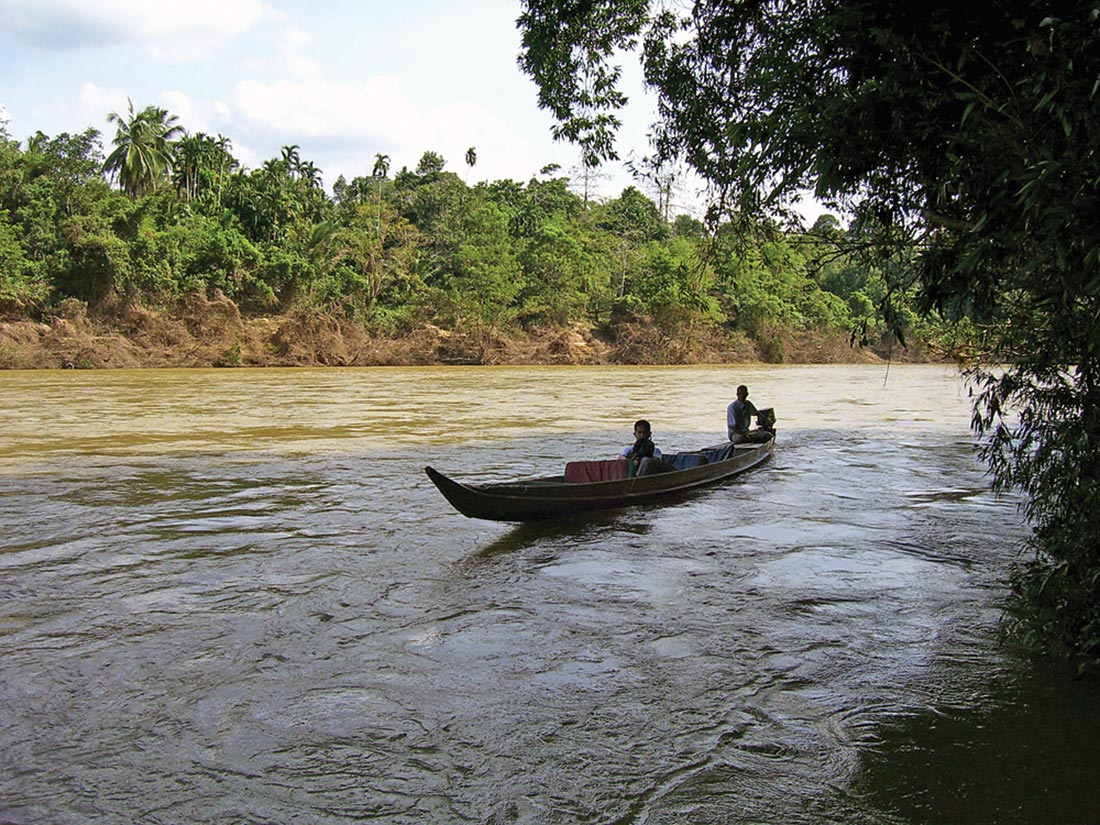Birding In Peninsular Malaysia
First published in Sanctuary Asia,
Vol. 42
No. 6,
June 2022
By Ram Gopalakrishnan
This delightful little piece should gladden the hearts of birders across the world. Without frills, the author shares the anticipation and joy of birding, offering Sanctuary readers vignettes from a clutch of birding destinations in Malaysia. By some estimations, birdwatchers who tend to keep to themselves and to walk, or stay put in spots they choose with care, far, far outnumber tiger and large mammal watchers. In post-pandemic times, this will probably spell good news for the tourism industry in the countries of South and Southeast Asia, including Nepal, Bhutan, India, Sri Lanka, Thailand, Malaysia. Cambodia and the Philippines.
Hornbills, huge birds with majestic casques, are my favourites. When I heard that on a single trip I could see up to 10 new species of them, I wasted no time in signing up for a birding tour to peninsular Malaysia in May 2019. Home to rich tropical rainforests, with the Titiwangsa mountain range running north to south, some 720 or so bird species are found here and I hoped to see and photograph as many of them as I could over a week.

The Red-headed Trogon found in South and Southeast Asia has a distinct, contrasting black-and-white pattern under its tail, seen better from below. The author sighted this bird on Fraser’s Hill, a village in Pahang, Malaysia and an Important Bird Area (IBA). Its relatively less-touristy nature and smaller visitor footfall is a blessing for birders. Photo: Ram Gopalakrishnan.
First stop: Hulu Langat
Hulu Langat, a reserve forest close to Kuala Lumpur, was our first port of call. The hot, humid rainforest and the profusion of species even at mid-day was the perfect antidote to any lingering jet lag from our overnight flight. Three malkoha species (Red-billed, Chestnut-bellied and Raffles) were frustratingly difficult to photograph as they hopped and hid in the canopy. A flowing stream however, served as the perfect photo studio for a Rufous-backed Kingfisher’s iridescent plumage and the Dusky Broadbill’s nest, around which the distinctive black and white bird hovered protectively. With their wide, gaping bills, admirably suited to their insect menu, broadbills seem straight out of a cartoon strip, particularly the stunning Black-red Broadbill, one of seven broadbills found in peninsular Malaysia. Equally impressive was the Black-yellow Broadbill at the nearby Gunung Nuang Reserve Forest. We gazed admiringly at the impossibly long and curved bill of the Long-billed Spiderhunter and looked from a distance at its carefully woven nest beneath a banana leaf. It was quite a start, despite the birding being cut short by a sharp tropical downpour. Nevertheless, we even managed to photograph Malaysia’s tiniest raptor, the Black-thighed Falconet, atop a pole. As might be imagined, we truly looked forward to the next few days!
Bukit Tinggi
We drove east to Bukit Tinggi, a hill developed into a resort with a chateau at the top! We were delighted to see that verdant forests grew undisturbed in the resort campus, and in this magical forest we encountered several rare birds thanks to a group of bird guides who took it upon themselves to transform the site into a birding haven 11 years ago. The famously skittish endemic Malaysian Mountain Peacock Pheasant, reliably seen in only a couple of places in Malaysia, wandered cautiously out in search of worms, ignoring the gaggle of photographers. A Ferruginous Partridge was next, its bright, rust-coloured breast showing up starkly in the images we managed to shoot, until it was chased away by the larger Peacock Pheasant. The calls of a White-rumped Shama were momentarily drowned out by the loud wing beats of a Great Hornbill flying directly overhead.
Sunlight plus fruiting trees make for a barbet haven! We managed to spot all five found here when they arrived for their morning quota of berries – the Blue-eared, Gold-whiskered, Black-browed, Sooty and Yellow-crowned. A pair of Wreathed Hornbills would distract us now and then with their aerial sorties between trees and at one point, a Whiskered Tree Swift looked almost ridiculous with its long white whiskers seemingly plastered against its face like streamers.

The author also spotted the Fire-tufted Barbet – a bird native to Peninsular Malaysia and Sumatra, with its silvery cheeks and ‘painted nose hair’. It has a loud, creaking call, which sounds akin to a cranking, rusty machine. Photo: Public domain/Jason Thompson.
Lanchang Krau Reserve Forest
Our next stop was the Lanchang Krau Reserve. An ingeniously constructed hide opposite a log (nicknamed ‘Super-log’ for the number of rare birds it routinely attracts) threw up a procession of babblers (Short-tailed, Black-capped and Ferruginous) and bulbuls (Hairy-backed, Grey-cheeked and Yellow-bellied). The harsh squawk and slow drumming of the world’s largest woodpecker, the Great Slaty, preceded its appearance. However, the literal and figurative jewel in the crown was that emerald of the forest, the Green Broadbill. The obligatory evening shower was preceded by a dozen Oriental Pied Hornbills as we passed under their evening flyway while making our way further east to Jerantut. We concluded the day with hot dosas, chutney and sambhar at the only Indian restaurant in Jerantut!

A Spotted Wood Owl spotted by the author during a night out in Taiping town, where he also sighted 10 Barn Owls. Birding around the town offered varied habitats from a lake to tin mine-converted to open grassland and along plantations. Sadly, much of Malaysia’s oldest forests have been cleared for timber and rubber plantations in the past, and, in more contemporary times, for palm oil and construction. Photo: Ram Gopalakrishnan.
Kuala Tahan National Park
A boat ride across the Tahan river carried us into the Kuala Tahan National Park, a tropical evergreen forest thick with trees such as the agarwood (used in perfumery), bamboo (used in virtually everything) and the mengkundur, whose buttresses stretched several feet along the ground. Here we encountered the spectacular Crested Fireback, which, with its blazing orange back and blue face, looked like it had stepped straight out of a picture book. As we clicked away, the male and female approached so close that we could have reached out to pet them. In fact, we found ourselves switching from our long lenses to cell phone cameras! Alas, the endemic Malaysian Peacock Pheasant did not show up. We were told that the Crested Fireback – larger in size – bullies it out of its territory at first glimpse. Most visitors see one or the other, seldom both. Our guide, James Neoh Hang Peng said we were lucky to get such an extended audience with the fireback, as nowhere else in Malaysia can either of these two birds be reliably spotted. While the Chestnut Winged Babbler kept up its continuous whoop, disproportionate to its small size, most other birds seemed to have taken the day off, with just a couple of forest babblers (Abbott’s and Chestnut-winged) and the Buff-necked Woodpecker adding to our list.
Fraser’s Hill
At 1,200 m., Fraser’s Hill offered us a cool respite from the shirt-soaking humidity of the low-altitude rainforests we had thus far visited. Replaced as a preferred tourist destination by the Genting and Cameron Highlands, it is relatively less touristy and the lesser visitor footfall is a blessing for birders. Signboards depicting the birdlife of the area left no doubts as to how bird-friendly the destination was. In keeping with its reputation as an Important Bird Area (IBA), we saw an impressive diversity of avians. The spectacular Red-headed Trogon left the photographers among us struggling to keep up, as the bird hopped from tree to tree, while the Blue Nuthatch’s name did little justice to this bespectacled tree crawler. Worms on a twig enticed a hungry trio – a Large Niltava, a Streaked Wren Babbler and a Rufous-browed Flycatcher. A discarded melon attracted a whole bunch of birds: the aggressive and “gangster-like” Chestnut-capped Laughingthrush elbowing the other birds out. Eventually however the Fire-tufted Barbet displayed its “painted nose hair”, and the Silver-eared Mesia did manage to get hold of a few scraps. We were also able to catch glimpses of the shyer ones, such as the Malayan Laughingthrush and Pygmy Wren Babbler in the background undergrowth. A Maroon Woodpecker kept up its distinctive call before revealing itself. A troop of endangered monkeys, the white-thighed surili, drew some frantic whistles from some Green Magpies! The musical tweeting of the Lesser Shortwing preceded a fleeting appearance and Golden Babblers buzzed about in the undergrowth. The “dopey-like” Long-tailed Broadbill kept up a vigil around its neatly constructed hanging nest.

A boat ride across the Tahan river transported the author and his group into the biodiversity rich Kuala Tahan National Park, a tropical evergreen forest with vegetation that includes the agarwood (used in perfumery), bamboo (used in virtually everything) and the mengkundur, whose buttresses extend several feet along the ground. Photo: Public domain/Tian Yake.
Sungai Relau National Park
Our itinerary next took us to a lowland tropical rainforest, glistening after sharp showers. This amazing Protected Area virtually overflowed with tropical beauties. The spiderhunter clan all marked their attendance (Streaked, Spectacled, Grey-bellied, Yellow-eared, Thick-billed). The lurid red on the nape of the Red-naped Trogon contrasted wonderfully with the maroon on its back. A rare Yellow-vented Flowerpecker was also seen, and a Black-bellied Malkoha sent our count of the species up to four. A Siamang ape whooped continuously through it all. While calls of such prized exotics like the Malayan Peacock Pheasant, the Garnet Pitta, the Scarlet-rumped Trogon, Great Slaty Woodpecker and the Green Broadbill boomed out from the thick canopy virtually right next to the trail, we did not see them, especially since our group leader Nikhil Bhopale had us on a strict no bird call playback policy.
In and around Taiping
We stopped at the Kek Lok Tong cave, Ipoh, on our way to Taiping and the west coast. The limestone cliff’s small crevices and holes provide one of the best places to see the Javan Sparrow. Most fortuitously introduced here in the 1950s, poaching of these photogenic birds for the caged bird market has rendered them extinct in their native Bali. Spotting a Banded Woodpecker and the Blue Whistling Thrush, both endemic, made for a most refreshing pit-stop.
Birding around Taiping town with its varied habitats was laid back and relaxed. At the lake, we saw several Milky Storks (imagine a whitewashed Painted Stork!) and Pink-breasted Green Pigeons. The rainforest around Bukit Larut (formerly Campbell Hill) yielded our fifth malkoha species (Chestnut-breasted), the Blue-winged Leafbird and the Sultan Tit, a bird you can never get enough of. A filled-in tin mine was now an open grassland that yielded typical species: Blue-throated Bee-eater, Pied Fantail, White and Black-headed Munias and a Yellow-bellied Prinia. To the delight of birds and birders, one of the oldest industries in the former Malaya, had virtually shut down by the mid-1980s when tin prices dropped causing Malaysia’s production to fall by 90 per cent.
That night, we went owling: a long, straight road with palm plantations and power lines on either side afforded the perfect spot for owls looking to feast on the toads that were out in numbers after the evening shower. All we had to do was drive with the headlights in high beam and hey presto, the owls popped out. We encountered 10 Barn Owls perched at intervals along the road until a Spotted Wood Owl broke their monopoly.
The Mangroves of Matang
The loud call of the Collared Kingfisher rang out, alternating with the strident notes of an Ashy Tailorbird. We were in the 40,000-acre Matang mangrove ecosystem, a Protected Area since 1903. The tall mangrove trees were dotted with woodpecker holes, and an elegant boardwalk allowed us to bird deep into the mangroves. We spotted diverse species adapted to this unique habitat: Brown-throated Sunbird, the unobtrusive Mangrove Whistler and the Olive-winged Bulbul. Two male Copper-throated Sunbirds put up quite a show to grab the attention of a female. We reluctantly dragged ourselves away from this magical mangrove wonderland and headed back onto the highway to get to Kuala Lumpur.

A map of the route followed by the author on his birding trip in Malaysia. One of the most ecologically megadiverse countries in the world and home to over 800 species of birds, Malaysia is a birder’s haven. Photo: Ram Gopalakrishnan.
Hulu Langat and Perdik
On our last day, we returned to Hulu Langat and Perdik: the loud chung-chung-chung rhythmic call of the tiny Pin-striped Tit-babbler virtually served as background music for more tropical gems. We were able to photograph two flowerpeckers (Orange-bellied and Yellow-breasted) and that dusky beauty, the Grey-bellied Bulbul, in the sunlight. The Rufous-backed Kingfisher (formerly Oriental dwarf) was still fishing away at the same spot we saw it a week ago. The single, bell-like chime of the shy Black Magpie heralded the arrival of this huge bird – you might mistake it for a crow were it not for the call and the white side stripe. The Checker-throated Woodpecker’s prominent yellow nape had us holding our breath. And to top it all, the prettiest and only coloured member of the forktail clan, the Chestnut-naped Forktail, chose to visit a puddle smack in front of our car!
Much of Malaysia’s old growth forests have been cleared for timber and rubber plantations in the past, and in more contemporary times for palm oil and construction, disturbingly similar to the situation in Borneo. We saw vast swathes of countryside full of glistening palm trees, where once verdant forest and ideal bird habitat must have existed. Poaching, especially from across the Thai border is a serious problem and has driven iconic birds such as the Helmeted Hornbill and the Garnet Pitta to the endangered list. Recent laws to curb the cutting of primary forests and increasing poaching penalties are most welcome, but would these measures be enough to preserve Malaysia’s slowly declining bird wealth?
Meanwhile, go there quickly before the next COVID-19 wave affects your travel plans!
Dr. Ram Gopalakrishnan A physician based in Chennai, he enjoys birding in out-of-the-way locations, learning about the avian world and writing about them. His articles on travel and birding have been published in magazines including Sanctuary Asia and on blogs.






